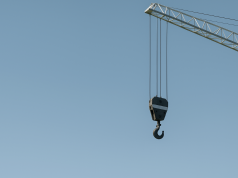Materials and insulation are key in low-carbon builds. Yet, often missed is the on-site handling of those materials. Management of waste is another missed factor, which adds embodied carbon.
The technology behind vacuum lift systems, particularly elephant vacuum lifters, stands out in a noteworthy way. Embodied carbon refers to the emissions generated throughout the life cycle of building materials. This encompasses emissions from its extraction, maintenance, and eventual disposal.
In efficient buildings, it can account for anywhere from 10% to 80% of total life-cycle emissions. If you follow the numbers, that’s a huge chunk we can shrink by reducing material damage and waste.
It’s why vacuum lifting equipment is worth a second look. These systems lift heavy or fragile items using suction, not straps, not clamps. That cut in rough handling leads to far less risk of scratches or breakages. It protects glass, metal, and panels from damage on-site.
How Vacuum Lifting Reduces Waste and Embodied Emissions
With traditional lifting equipment, there’s always a chance of damaging a panel or slab. That means replacements, which equals more emissions in manufacturing, shipping, and handling.
A vacuum lifting device keeps that risk low by securing the material, preserving it intact. It saves embodied carbon before it becomes an issue. It’s a minor change in process with a clear environmental edge.
Energy-Efficient Operation
Modern vacuum systems run on electric or compressed-air vacuum pumps. With some even using rechargeable batteries. Switching from fuel-powered methods leads to cleaner and quieter operations on site. This often leads to improved energy efficiency. When every watt (or barrel of fuel) counts toward your carbon targets, that matters.
Control, Speed, and Flexibility
Vacuum lift gear has precision; it’s an engineering tool. You can rotate, tilt, or flip panels or slabs made of materials like marble, sandwich panels, glass, or sheet metal. This flexibility speeds up installation and removes the need for extra staging or manual adjustments. Saved time means reduced idle machinery and streamlined workflows, which also cuts carbon.
Safety Meets Sustainability
Better grip, faster moves, fewer accidents. Those are reasons enough for safer, more efficient job sites. But there’s an environmental bonus: fewer accidents mean fewer delays, less rework, and less energy spent on fixes. All that adds up to real carbon savings.
Built for Reuse: A Circular Approach
These aren’t single-use tools. Elephant vacuum lifters, for example, are durable, reusable gear. This durability supports circular construction thinking. It uses fewer disposable supports, fewer rigging straps, and less packaging. Over many projects, that means less waste and embodied impact.
Why Low-Carbon Builders Should Care
- Reduced Embodied Carbon: Fewer damaged materials mean real savings in upfront carbon.
- More Efficient Energy Use: Electric or battery-powered lifting tools replace clunkier, fuel-based methods.
- Less Waste, More Circularity: Reusable equipment aligns with sustainable, resource-efficient construction.
- Faster, Safer On-Site Work: Good handling speeds things up, reduces energy from delays or rework, and cuts risk.
Designers who use reclaimed materials, such as salvaged timber and recycled metal, help reduce new production and lower energy use. This approach also gives their projects an authentic industrial look. It can slash the environmental impact of new builds on existing buildings already in circulation. That same logic applies to operational decisions on-site.
Wrap-Up: Vacuum Lifting as a Smart, Low-Carbon Tool
Vacuum lift systems are part of a practical shift toward lower-carbon construction. They protect materials, reduce waste, operate more efficiently, and support circular use.
When people discuss low-carbon buildings, they often mention solar panels or low-carbon materials. But the genuine change happens through small actions and the daily work done on-site. Integrating vacuum lift systems advances low-carbon goals, one panel at a time.














